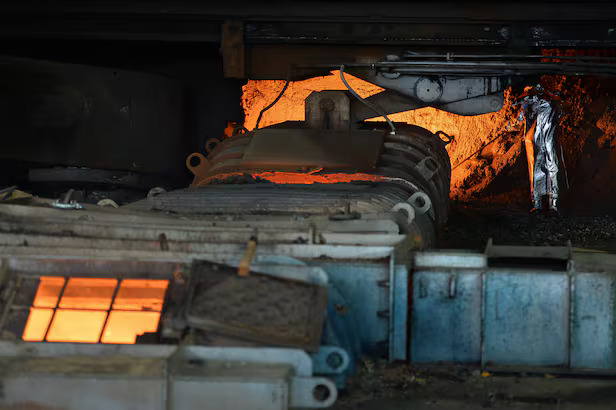🎧 Listen to This Article
South Korea is ramping up efforts to establish low-carbon steel standards as the European Union’s Carbon Border Adjustment Mechanism (CBAM) looms, potentially imposing significant financial burdens on its steel industry. In response, the government has devised a two-track strategy: actively participating in global discussions on carbon emission standards while developing a domestic framework that aligns with international expectations yet remains feasible for local producers.
Government’s Dual Approach to Low-Carbon Steel
The Ministry of Trade, Industry, and Energy, alongside the Ministry of Environment, is collaborating with the Climate Club, a coalition of 42 nations, to define international standards for low-carbon steel. These regulations will classify steel based on carbon emissions, akin to clean hydrogen certification.
Domestically, the government aims to develop pragmatic low-carbon steel benchmarks that accommodate the higher carbon footprint inherent to South Korea’s steel industry while ensuring international acceptance. A government official stated, “As global interest in low-carbon steel intensifies, we are strategizing to support this transition until carbon-free hydrogen reduction steelmaking becomes commercially viable.”
Carbon Costs and Global Trade Pressure
South Korea’s steel sector accounts for approximately 15% of the nation’s greenhouse gas emissions, with 67% of production relying on carbon-intensive blast furnaces that emit 2.3 tons of CO2 per ton of steel. Though electric arc furnaces account for 33% of output, they still rely on fossil fuel-based electricity. The industry is exploring solutions, such as integrating scrap metal into electric arc furnaces and injecting hydrogen-rich gas into blast furnaces, but progress has been slow.
The upcoming CBAM, set to take effect in 2026, requires importers to purchase carbon certificates for emissions equivalent to EU-produced goods. Analysts predict that CBAM-related costs for South Korea’s steel sector could surge from 85.1 billion won ($64 million) in 2026 to 550 billion won ($414 million) by 2034. Kim Jong-gap, former CEO of Korea Electric Power Corporation, warned, “The carbon border tax poses a more severe threat than Trump-era tariffs.”
Protectionist policies in major markets are compounding these challenges. The U.S. imposed a 25% tariff on global steel and aluminum imports in December, while the EU is set to reduce steel imports by 15% next month. India is also weighing a 12% tariff on foreign steel. These measures are particularly concerning as the EU, Japan, India, and the U.S. are the top importers of South Korean steel, with exports totaling over 13 million tons in 2024.
Strategic Shift Toward High-Value, Low-Carbon Steel
Industry leaders acknowledge the need for a pivot toward high-value, low-carbon steel products to remain competitive. A steel executive emphasized, “Given rising protectionism, we must focus on high-end markets rather than competing on price and volume.”
Trade Minister Ahn Duk-geun echoed this sentiment, urging companies to prioritize innovation and investment in sustainable steelmaking. He assured that the government will provide policy support to facilitate this shift.
To drive this transition, the Public-Private Joint Task Force to Strengthen Competitiveness in the Steel Industry—launched in January—will outline a strategic roadmap, including research and development, workforce training, and an enhanced scrap metal supply chain. The Ministry of Trade, Industry, and Energy plans to unveil a Blueprint for the Advancement of the Steel Industry by the end of the year, setting South Korea on a path toward a more sustainable and resilient steel sector.
For further details, clarification, contributions, or any concerns regarding this article, please contact us at editorial@tax.news. We value your feedback and are committed to providing accurate and timely information. Please note that our privacy policy will handle all inquiries



